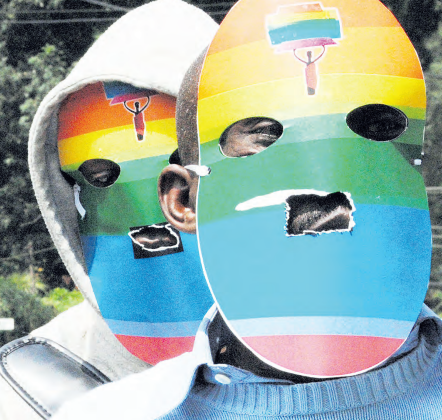

Over the first year of his relationship with a male lecturer, Jeffrey’s*
(not his real name) life changed for
the better.
The lecturer paid part of his fees
at a private university in Nairobi,
covered his upkeep, transport and started a mitumba business for
him.
But here he was. He grew more
anxious as hours passed.
Every turn felt like a failure as he searched for a clinic in Nairobi’s Pangani area. What began as a pimple in his anal area had grown into multiple warts, inflamed and raised lesions.
This caused discomfort with every step. Jeffrey found the Hoymas clinic after four hours. Medics at the clinic have supplied an image showing his highly irritated back, clustered with red blisters.
“We aimed to illuminate the challenges of treating anal diseases among gay, bisexual and other men who have sex with men (GBMSM) in a homophobic climate amid resource constraints,” said Samuel Anyula, a health officer at Hoymas who, alongside his colleagues, attended to Jeffrey last year.
The medics have, with permission, narrated Jeffrey’s experience in their paper published last week in the Global Public Health journal. It is titled, ‘Toward improving anal health care among GBMSM in Kenya: Lessons from a patient’s illness, treatment and recovery journey’.
The paper highlights problems men face due to lack of provisions and guidelines for care and support for gay people living with HPV-related disease in Kenya.
“This programmatic gap in Kenya persists despite growing evidence of the high prevalence of anal warts – which are mostly caused by HPV genotypes 6 and 11 – found in GBMSM populations,” they said.
There are currently no clinical guidelines available on how to treat serious anal diseases beyond recommendation of ‘referral’ to higher-level public healthcare facilities.
However, these higher-level facilities are unprepared to handle this burden of disease without standard operating procedures and a lack of guidelines around surgical and clinical care, pain management and trained providers who can provide high-quality and compassionate and respectful care, the team said.
The Health Options for Young Men Against STIs (Hoymas) is an organisation led by and for Kenyan GBMSM, including those who sell sex to men.
“By focusing on one patient’s complex and lengthy journey towards recovery from disease, we aim to draw out a constellation of factors that influence the progression of the disease and the effectiveness of clinical treatment over time,” the authors said.
Jeffrey was HIV-negative. However, he had unprotected sex during his one-year sexual relationship with the lecturer.
The small itchy painful pimples around the peri-anal region formed in January 2023, several months following his last intercourse with this sexual partner.
He turned to self-medication, buying antibiotics and pain relievers from a chemist. His situation worsened when he applied a hydrocortisone-based ointment that caused a severe skin reaction.
PAIN
After enduring months of pain and discomfort, Jeffrey finally sought help at a health clinic specialising in services for GBMSM.
But this clinic referred him to another because it lacked appropriate medication. The second clinic did not offer a proper examination and did not have the medication he needed. “This is a common problem for GBMSM in Kenya,” Anyula and his colleagues said.
“Many clinics are under-resourced and the stigma around same-sex relationships further complicates access to quality care. Men like Jeffrey are often left untreated or misdiagnosed.”
Several months had passed when a friend suggested Hoymas, which runs a Wellness and Enhancing Men’s Anal Health (Wemah) clinic, funded by the Canadian Institutes for Health Research.
The Wemah project has standard operating procedures for surgical care of severe anal diseases, which have been approved by the Kenya’s Ministry of Health.
The clinic’s healthcare team performed a comprehensive physical examination—something that had been missing in his earlier visits.
It was discovered Jeffrey had septic haemorrhagic warts, alongside an advanced herpes simplex viral (HSV) outbreak.
With this diagnosis, a treatment plan was quickly put in place. First, Jeffrey was prescribed antibiotics and antiviral medication to manage the ulcers and HSV outbreak.
After the inflammation subsided, the team applied podophyllum ointment to treat the warts. Jeffrey’s condition improved significantly over the course of three visits and his symptoms gradually disappeared.
The Wemah Project, through clinics like Hoymas, is working to enhance anal health services and encouraging GBMSM to seek early treatment.
Jeffrey never told his partner about his diagnosis, because of intense self-stigma, feelings of shame and fear of losing trust.
“This underscores the need for sexual health education programmes in this community that emphasises partner engagement, especially during the treatment process,” the medics said.
Upon resolution of his symptoms, Jeffrey expressed considerable gratitude, offering a gift of a
trench coat to Anyula.
The gift was declined, because of
organisational policy.










